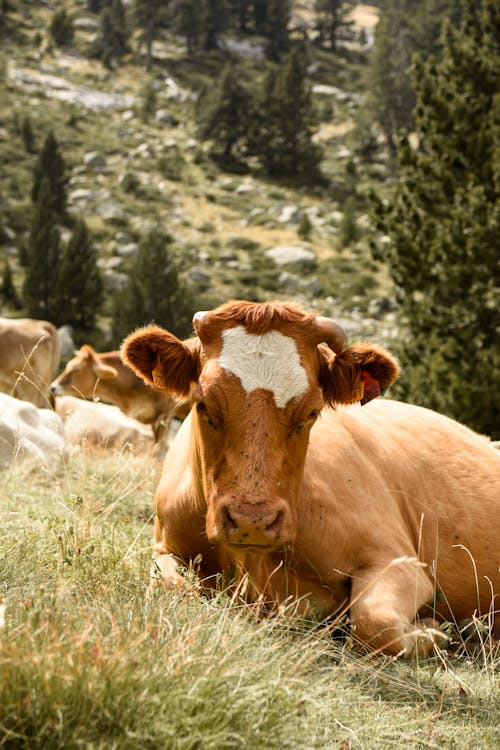Jak żywić melancholijne mikroby?
Żywienie w zaburzeniach osi mózgowo-jelitowej.
PRZYPISY
1. Stevens B.R. et al., Increased human intestinal barrier permeability plasma biomarkers zonulin and FABP2 correlated with plasma LPS and altered gut microbiome in anxiety or depression, "Gut" 67, 2018, 1555–1557.
2. Ceppa F., Mancini A., Tuohy K., Current evidence linking diet to gut microbiota and brain development and function, "Int. J. Food Sci. Nutr." 70, 2019, 1–19.
3. Koskinen K. et al., First Insights into the Diverse Human Archaeome: Specific Detection of Archaea in the Gastrointestinal Tract, Lung, and Nose and on Skin, "mBio" 8, 2017.
4. Huseyin C.E., Rubio R.C., O’Sullivan O., Cotter P.D., Scanlan P.D., The Fungal Frontier: A Comparative Analysis of Methods Used in the Study of the Human Gut Mycobiome, "Front. Microbiol." 8, 2017.
5. Shkoporov A.N. et al., The Human Gut Virome Is Highly Diverse, Stable and Individual Specific, "Cell Host Microbe" 26, 2019, 527–541.
6. Ravel J. et al., Human microbiome science: vision for the future, Bethesda, MD, July 24 to 26, 2013, "Microbiome" 2(16), 2014.
7. Monografia – Sanprobi® Stress, "Współczesna Dietetyka" http://www.wspolczesnadietetyka.pl/monografie/monografia-sanprobi-r-stress.
8. Aggeletopoulou I., Konstantakis C., Assimakopoulos S.F., Triantos C., The role of the gut microbiota in the treatment of inflammatory bowel diseases, "Microb. Pathog." 137, 2019, 103774.
9. Gracie D.J., Guthrie E.A., Hamlin P.J., Ford A.C., Bi-directionality of Brain-Gut Interactions in Patients With Inflammatory Bowel Disease, "Gastroenterology" 154, 2018, 1635–1646.
10. Gorrepati V.S. et al., Anxiety, depression, and inflammation after restorative proctocolectomy, "Int. J. Colorectal Dis." 33, 2018, 1601–1606.
11. Gevers D. et al., The treatment-naive microbiome in new-onset Crohn’s disease, "Cell Host Microbe" 15, 2014, 382–392.
12. Hirschberg S., Gisevius B., Duscha A., Haghikia A., Implications of Diet and The Gut Microbiome in Neuroinflammatory and Neurodegenerative Diseases, "Int. J. Mol. Sci." 20, 2019, 3109.
13. Sarkar R.S., Banerjee S., Gut microbiota in neurodegenerative disorders, "J. Neuroimmunol." 328, 2019, 98–104.
14. Badawy A.A., Guillemin G., The Plasma [Kynurenine]/[Tryptophan] Ratio and Indoleamine 2,3-Dioxygenase: Time for Appraisal, "Int. J. Tryptophan Res." IJTR 12, 2019, 1178646919868978.
15. Wu G., Functional amino acids in growth, reproduction, and health, "Adv. Nutr. Bethesda" Md 1, 2010, 31–37.
16. De La Cruz-Pérez V., Carrillo-Mora P., Santamaría A., Quinolinic Acid, an Endogenous Molecule Combining Excitotoxicity, Oxidative Stress and Other Toxic Mechanisms, "Int. J. Tryptophan Res." IJTR 5, 2012, 1–8.
17. Kim D.Y., Camilleri M., Serotonin: a mediator of the brain-gut connection, "Am. J. Gastroenterol." 95, 2000, 2698–2709.
18. Walther D.J. et al., Synthesis of serotonin by a second tryptophan hydroxylase isoform, "Science" 299, 2003, 76.
19. Hyland K., Inherited Disorders Affecting Dopamine and Serotonin: Critical Neurotransmitters Derived from Aromatic Amino Acids, "J. Nutr." 137, 2007, 1568–1572.
20. Yano J.M. et al., Indigenous bacteria from the gut microbiota regulate host serotonin biosynthesis, "Cell" 161, 2015, 264–276.
21. Zelante T. et al., Tryptophan catabolites from microbiota engage aryl hydrocarbon receptor and balance mucosal reactivity via interleukin-22, "Immunity" 39, 2013, 372–385.
22. Beischlag T.V., Morales L.J., Hollingshead B.D., Perdew G.H., The aryl hydrocarbon receptor complex and the control of gene expression. Crit. Rev., "Eukaryot. Gene Expr." 18, 2008, 207–250.
23. Li Y. et al., Exogenous stimuli maintain intraepithelial lymphocytes via aryl hydrocarbon receptor activation, "Cell" 147, 2011, 629–640.
24. Murota K., Nakamura Y., Uehara M., Flavonoid metabolism: the interaction of metabolites and gut microbiota. Biosci, "Biotechnol. Biochem." 82, 2018, 600–610.
25. Gill P.A., van Zelm M.C., Muir J.G., Gibson P.R., Review article: short chain fatty acids as potential therapeutic agents in human gastrointestinal and inflammatory disorders, "Aliment. Pharmacol. Ther." 48, 2018, 15–34.
26. Walker A.W., Duncan S.H., McWilliam Leitch E.C., Child M.W., Flint H.J., pH and peptide supply can radically alter bacterial populations and short-chain fatty acid ratios within microbial communities from the human colon, "Appl. Environ. Microbiol." 71, 2005, 3692–3700.
27. Skonieczna-Żydecka K. et al., Faecal Short Chain Fatty Acids Profile is Changed in Polish Depressive Women, "Nutrients" 10, 2018.
28. Stilling R.M. et al., The neuropharmacology of butyrate: The bread and butter of the microbiota-gut-brain axis? "Neurochem. Int." 99, 2016, 110–132.
29. Wolever T.M., Wal P., Spadafora P., Robb P., Guar, but not psyllium, increases breath methane and serum acetate concentrations in human subjects, "Am. J. Clin. Nutr." 55, 1992, 719–722.
30. Rahat-Rozenbloom S., Fernandes J., Cheng J., Gloor G.B., Wolever T.M.S., The acute effects of inulin and resistant starch on postprandial serum short-chain fatty acids and second-meal glycemic response in lean and overweight humans, "Eur. J. Clin. Nutr." 71, 2017, 227–233.
31. Roman L., Martinez M.M., Structural Basis of Resistant Starch (RS) in Bread: Natural and Commercial Alternatives, "Foods" 8, 2019.
32. Jakobsson H.E. et al., Decreased gut microbiota diversity, delayed Bacteroidetes colonisation and reduced Th1 responses in infants delivered by caesarean section, "Gut" 63, 2014, 559–566.
33. Moles L. et al., Bacterial Diversity in Meconium of Preterm Neonates and Evolution of Their Fecal Microbiota during the First Month of Life, "PLOS ONE" 8, 2013, 66986.
34. Groer M.W. et al., Development of the preterm infant gut microbiome: a research priority, "Microbiome" 2, 2014, 38.
35. Azad M.B. et al., Impact of maternal intrapartum antibiotics, method of birth and breastfeeding on gut microbiota during the first year of life: a prospective cohort study, "BJOG Int. J. Obstet. Gynaecol." 123, 2016, 983–993.
36. Soderborg T.K., Borengasser S.J., Barbour L.A., Friedman J.E., Microbial transmission from mothers with obesity or diabetes to infants: an innovative opportunity to interrupt a vicious cycle, "Diabetologia" 59, 2016, 895–906.
37. Sanz Y., Santacruz A., Gauffin P., Gut microbiota in obesity and metabolic disorders, "Proc. Nutr. Soc." 69, 2010, 434–441.
38. Indrio F. et al., Epigenetic Matters: The Link between Early Nutrition, Microbiome, and Long-term Health Development, "Front. Pediatr." 5, 2017, 178.
39. Cabrera-Rubio R. et al., The human milk microbiome changes over lactation and is shaped by maternal weight and mode of delivery, "Am. J. Clin. Nutr." 96, 2012, 544–551.
40. Goldsmith F., O’Sullivan A., Smilowitz J.T., Freeman S.L., Lactation and Intestinal Microbiota: How Early Diet Shapes the Infant Gut, "J. Mammary Gland Biol. Neoplasia" 20, 2015, 149–158.
41. McGuire M., McGuire M.A., Bode L., Prebiotics and Probiotics in Human Milk: Origins and Functions of Milk-Borne Oligosaccharides and Bacteria, "Academic Press" 2016.
42. Hassiotou F. et al., Maternal and infant infections stimulate a rapid leukocyte response in breastmilk, "Clin. Transl. Immunol." 2, 2013, 3.
43. Ballard O., Morrow A.L., Human milk composition: nutrients and bioactive factors, "Pediatr. Clin. North Am." 60, 2013, 49–74.
44. Bode L., Human milk oligosaccharides: every baby needs a sugar mama, "Glycobiology" 22, 2012, 1147–1162.
45. Biagi E. et al., Microbial Community Dynamics in Mother’s Milk and Infant’s Mouth and Gut in Moderately Preterm Infants, "Front. Microbiol." 9, 2018.
46. Toribio-Mateas M., Harnessing the Power of Microbiome Assessment Tools as Part of Neuroprotective Nutrition and Lifestyle Medicine Interventions, "Microorganisms" 6, 2018, 35.
47. Lu Q.Y. et al., Prebiotic Potential and Chemical Composition of Seven Culinary Spice Extracts, "J. Food Sci." 82, 2017, 1807–1813.
48. Halvorsen B.L. et al., Content of redox-active compounds (ie, antioxidants) in foods consumed in the United States, "Am. J. Clin. Nutr." 84, 2006, 95–135.
49. Clavel T. et al., Isoflavones and functional foods alter the dominant intestinal microbiota in postmenopausal women, "J. Nutr." 135, 2005, 2786–2792.
50. Ozdal T. et al., The Reciprocal Interactions between Polyphenols and Gut Microbiota and Effects on Bioaccessibility, "Nutrients" 8, 2016, 78.
51. Cardona F., Andrés-Lacueva C., Tulipani S., Tinahones F.J., Queipo-Ortuño M.I., Benefits of polyphenols on gut microbiota and implications in human health, "J. Nutr. Biochem." 24, 2013, 1415–1422.
52. Dueñas M. et al., A Survey of Modulation of Gut Microbiota by Dietary Polyphenols, "BioMed Research International"; https://www.hindawi.com/journals/bmri/2015/850902/ (2015) doi:10.1155/2015/850902.
53. Wang D. et al., Role of intestinal microbiota in the generation of polyphenol-derived phenolic acid mediated attenuation of Alzheimer’s disease β-amyloid oligomerization, "Mol. Nutr. Food Res." 59, 2015, 1025–1040.
54. Khalid S. et al., Effects of Acute Blueberry Flavonoids on Mood in Children and Young Adults, "Nutrients" 9, 2017.
55. Bowtell J.L., Aboo-Bakkar Z., Conway M.E., Adlam A.L.R., Fulford J., Enhanced task-related brain activation and resting perfusion in healthy older adults after chronic blueberry supplementation, "Appl. Physiol. Nutr. Metab. Physiol." 42, 2017, 773–779.
56. Miller E.D., Dziedzic A., Saluk-Bijak J., Bijak M., A Review of Various Antioxidant Compounds and their Potential Utility as Complementary Therapy in Multiple Sclerosis, "Nutrients" 11, 2019.
57. Lambert J.D., Elias R.J., The antioxidant and pro-oxidant activities of green tea polyphenols: a role in cancer prevention, "Arch. Biochem. Biophys." 501, 2010, 65–72.
58. Semnani M., Mashayekhi F., Azarnia M., Salehi Z., Effects of green tea epigallocatechin-3-gallate on the proteolipid protein and oligodendrocyte transcription factor 1 messenger RNA gene expression in a mouse model of multiple sclerosis, "Folia Neuropathol." 55, 2017, 199–205.
59. Mohammadi A.A. et al., The effects of probiotics on mental health and hypothalamic-pituitary-adrenal axis: A randomized, double-blind, placebo-controlled trial in petrochemical workers, "Nutr. Neurosci." 19, 2016, 387–395.
60. Pei R. et al., Low-fat yogurt consumption reduces biomarkers of chronic inflammation and inhibits markers of endotoxin exposure in healthy premenopausal women: a randomised controlled trial, "Br. J. Nutr." 118, 2017, 1043–1051.
61. Prado M.R. et al., Milk kefir: composition, microbial cultures, biological activities, and related products, "Front. Microbiol." 6, 2015, 1177.
62. Bell V., Ferrão J., Pimentel L., Pintado M., Fernandes T., One Health, Fermented Foods, and Gut Microbiota, "Foods Basel Switz." 7, 2018.
63. Noori N., Bangash M.Y., Motaghinejad M., Hosseini P., Noudoost B., Kefir protective effects against nicotine cessation-induced anxiety and cognition impairments in rats, "Adv. Biomed. Res." 3, 2014, 251.
64. Sun Y. et al., Supplementation with Lactobacillus kefiranofaciens ZW3 from Tibetan Kefir improves depression-like behavior in stressed mice by modulating the gut microbiota, "Food Funct." 10, 2019, 925–937.
65. Özcan H., Oskay Ü., Bodur A.F., Effects of Kefir on Quality of Life and Sleep Disturbances in Postmenopausal Women, "Holist. Nurs. Pract." 33, 2019, 207–213.
66. Kivanç M., Yapici E., Kefir as a Probiotic Dairy Beverage: Determination Lactic Acid Bacteria and Yeast; doi:10.18178/ijfe.1.1.55-60.
67. Zanirati D.F. et al., Selection of lactic acid bacteria from Brazilian kefir grains for potential use as starter or probiotic cultures, "Anaerobe" 32, 2015, 70–76.
68. Witthuhn R.C., Schoeman T., Britz T.J., Characterisation of the microbial population at different stages of Kefir production and Kefir grain mass cultivation, "Int. Dairy J." 15, 2005, 383–389.
69. Diosma G., Romanin D.E., Rey-Burusco M.F., Londero A., Garrote G.L., Yeasts from kefir grains: isolation, identification, and probiotic characterization, "World J. Microbiol. Biotechnol.: 30, 2014, 43–53.
70. Laureys D., De Vuyst L., Microbial Species Diversity, Community Dynamics, and Metabolite Kinetics of Water Kefir Fermentation, "Appl. Environ. Microbiol." 2014, 80, 2564–2572.
71. Laureys D., De Vuyst L., The water kefir grain inoculum determines the characteristics of the resulting water kefir fermentation process, "J. Appl. Microbiol." 122, 2017, 719–732.
72. Gulitz A., Stadie J., Wenning M., Ehrmann M.A., Vogel R.F., The microbial diversity of water kefir, "Int. J. Food Microbiol." 151, 2011, 284–288.
73. Villarreal-Soto S.A., Beaufort S., Bouajila J., Souchard J.P., Taillandier P., Understanding Kombucha Tea Fermentation: A Review, "J. Food Sci." 83, 2018, 580–588.
74. Marco M.L. et al., Health benefits of fermented foods: microbiota and beyond, "Curr. Opin. Biotechnol." 44, 2017, 94–102.
75. Leroy F., De Vuyst L., Fermented food in the context of a healthy diet: how to produce novel functional foods? "Curr. Opin. Clin. Nutr. Metab. Care" 17, 2014, 574–581.
76. Aslam H. et al., Fermented foods, the gut and mental health: a mechanistic overview with implications for depression and anxiety, "Nutr. Neurosci." 1–13, 2018; doi:10.1080/1028415X.2018.1544332.
77. Magnúsdóttir S., Ravcheev D., de Crécy-Lagard V., Thiele I., Systematic genome assessment of B-vitamin biosynthesis suggests co-operation among gut microbes, "Front. Genet." 6, 2015, 148.
78. Skonieczna-Żydecka K., "Współczesna Dietetyka" http://www.wspolczesnadietetyka.pl/autorzy/karolina-skonieczna-zydecka.
79. Diop L., Guillou, S. & Durand, H. Probiotic food supplement reduces stress-induced gastrointestinal symptoms in volunteers: a double-blind, placebo-controlled, randomized trial, "Nutr. Res. N. Y. N" 28, 2008, 1–5.
80. Messaoudi M. et al., Assessment of psychotropic-like properties of a probiotic formulation (Lactobacillus helveticus R0052 and Bifidobacterium longum R0175) in rats and human subjects, "Br. J. Nutr." 105, 2011, 55–764.


